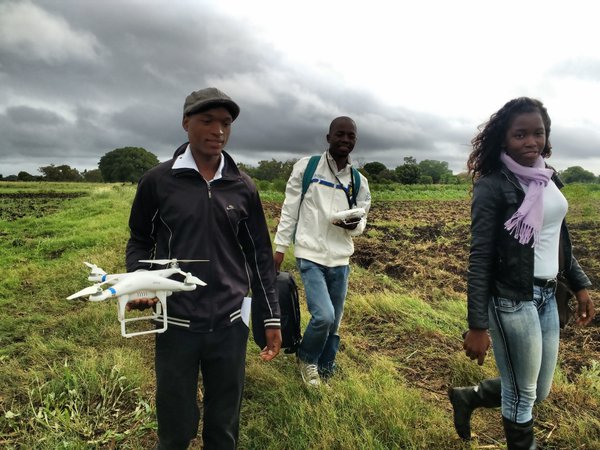A key factor in enabling an increase and efficiency in food production is providing farmers with relevant information. Such information is needed as farmers have limited resources (seed, water, fertilizer, pesticides, human power) and are always in doubt in which location and when they should supply these resources. Interesting is that especially smallholders, with their limited resources, are in need of this kind of information. Spatial information from flying sensors (drones) can be used for this. Flying sensors offer also the opportunity to obtain information outside the visible range and can therefore detect information hidden for the human eye (ThirdEye). Nowadays, low-cost sensors in the infra-red spectrum can detect crop stress about two weeks before the human eye can see this.
Our innovation is a major transformation in farmers’ decision making regarding the application of limited resources such as water, seeds, fertilizer and labor. Instead of relying on common-sense management, farmers are now able to take decisions based on facts, resulting in an increase in water productivity. The flying sensor information helps farmers to see when and where they should apply their limited resources. We are convinced that this innovation is a real game-changing comparable with the introduction of mobile phones that empowered farmers with instantaneous information regarding markets and market prices. In summary, the missing information on markets has been solved by the mobile phone introduction, the flying sensors close the missing link to agronomic information on where to do what and when.
History
From 2014 to 2017, FutureWater was granted support from the Securing Water for Food program, funded by USAID, SIDA and the Dutch Government of Foreign Affairs, for piloting the use of flying sensors to support farmers in Mozambique with their decision making in farm and crop management. In Mozambique, we transferred our technical skills to local ThirdEye operators over the 3 years of the grant. A total of 6 active local operators were trained and provided the service to more than 3,500 farmers over more than 1,600 ha. These operators were able to support over 400 small-scale farmers, by collecting information and sharing it with farmers on weekly basis. Based on the information, farmers take decisions on where to do what in terms of irrigation, fertilizer application and pesticides, helping them improve their water productivity. Furthermore, they now have the capacity to deal with technical issues and are very skilled in providing advice to farmers. As a result, the farmer’s water productivity was increased by 55%, meaning less water is used to achieve the same crop yield as without ThirdEye services.
In 2017, the ThirdEye service was also implemented in Kenya as part of the Smart Water for Agriculture program implemented by SNV. Training was given to 10 operators, who provided the services to approximately 2,000 smallholder farmers in the duration of the program. The training consisted of flying sensor use, technical skills, safety and protocols, imagery processing and consultancy. After the training, the operators started working regularly in the regions of Meru and Nakuru. They visited the farmer’s fields, conduct flying sensors flights, processed the images and gave advice on improving their agricultural practices. Next to the service for smallholder farmers, ThirdEye delivered various services to medium and big sized farmers. In 2018, this operator unit acquired the first local ThirdEye office in Meru, Kenya.

Current activities
ThirdEye has evolved from being a start-up in Mozambique and Kenya, to becoming leading companies in both countries. They country teams are registered locally as commercial companies and continue providing mapping and monitoring services for farmers based on aerial images. Support continues to be provided by experts in the Netherlands and exchange of experiences between country teams is supported.
